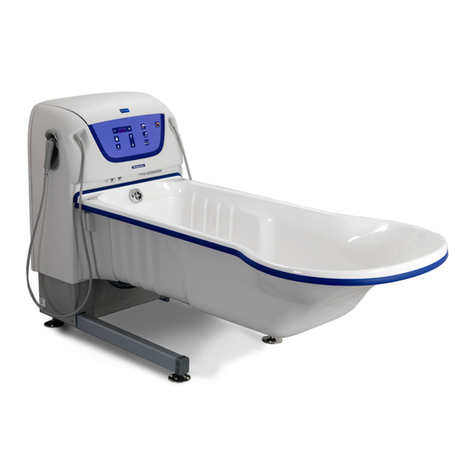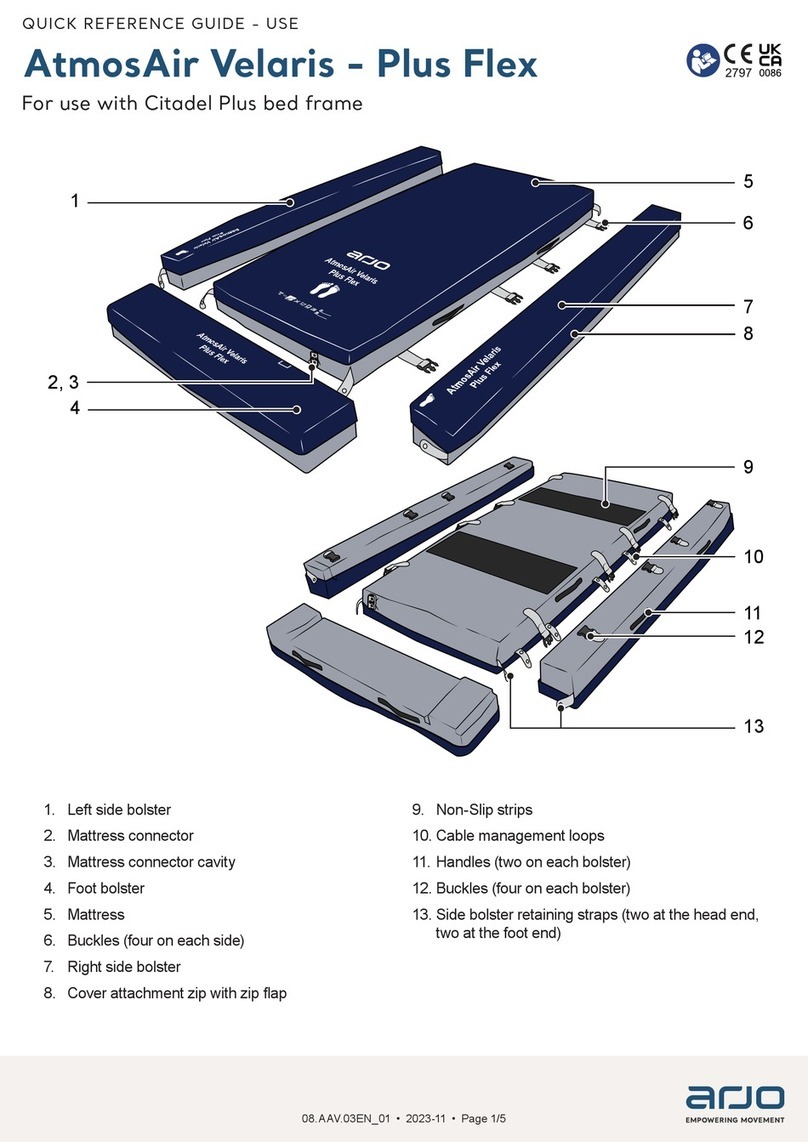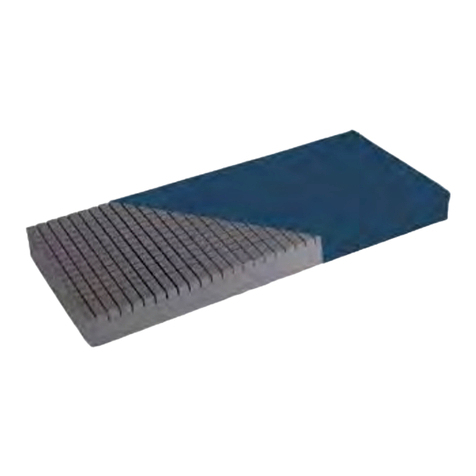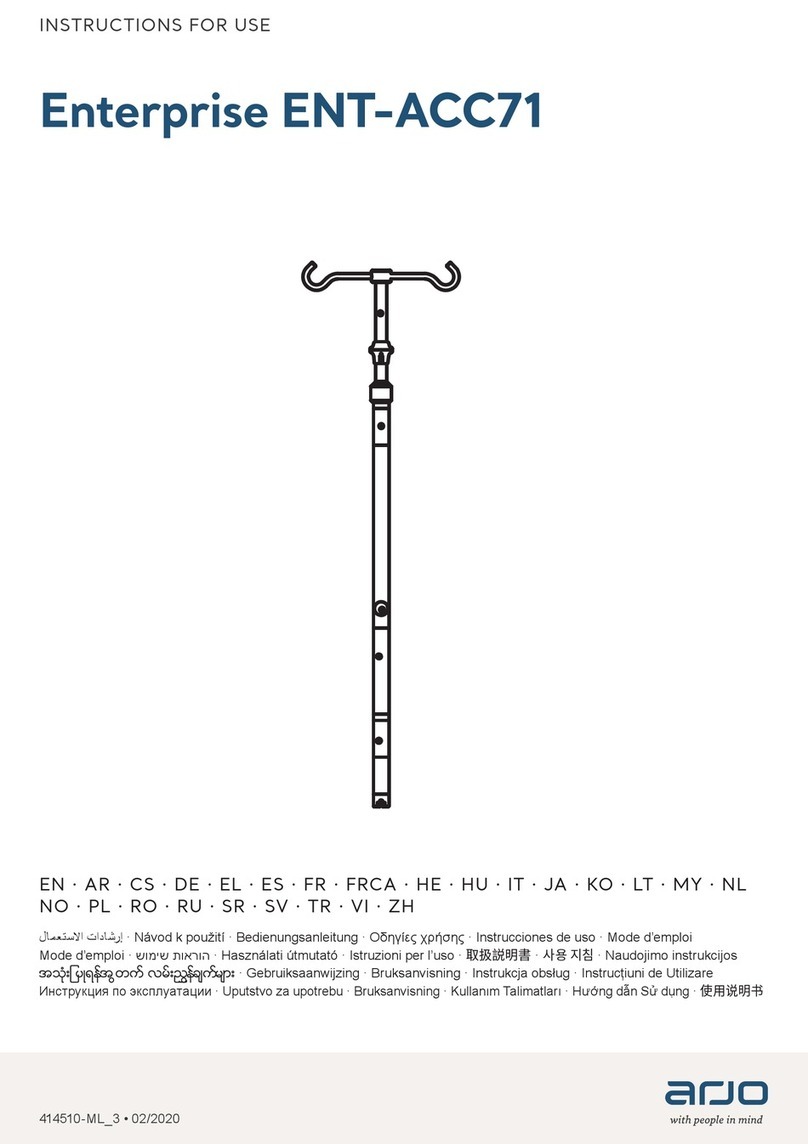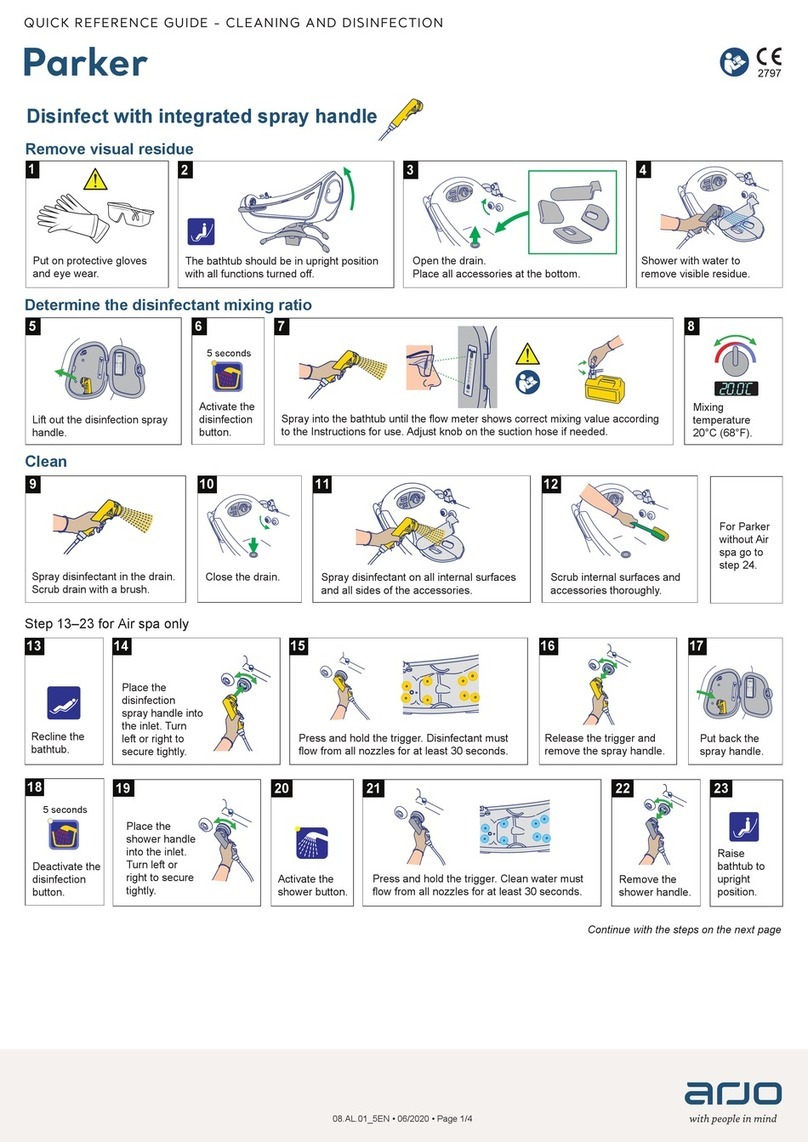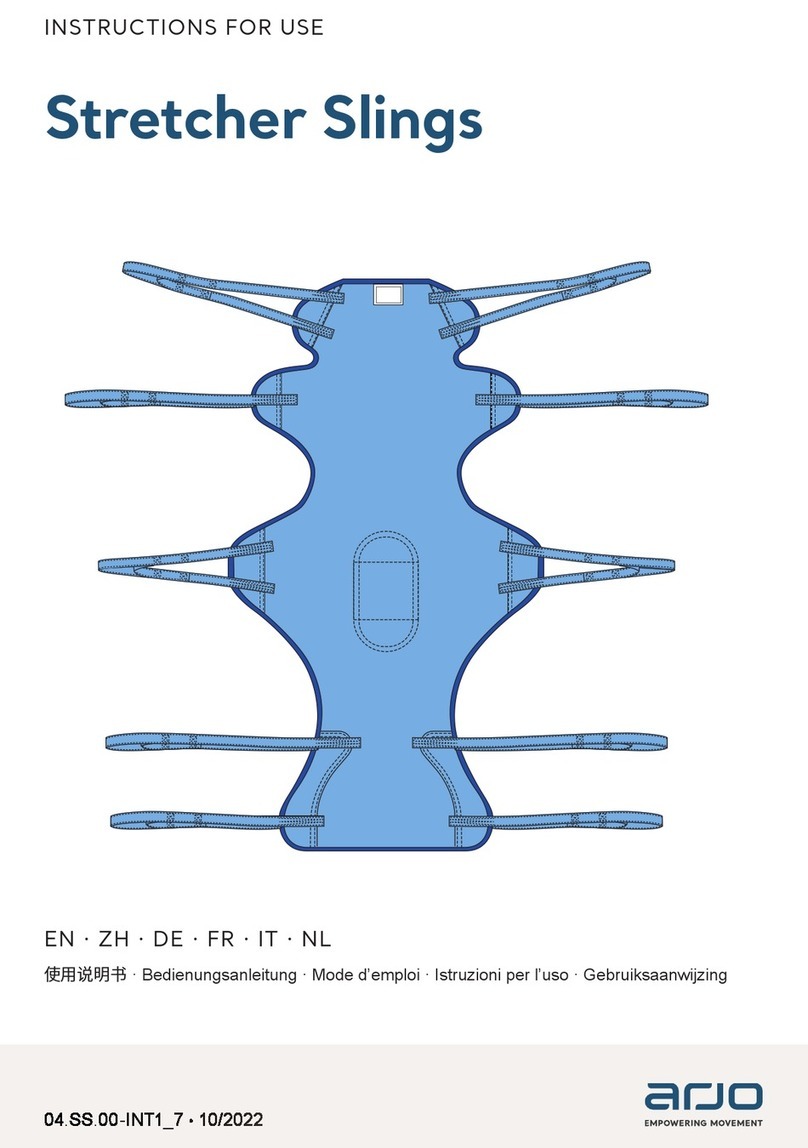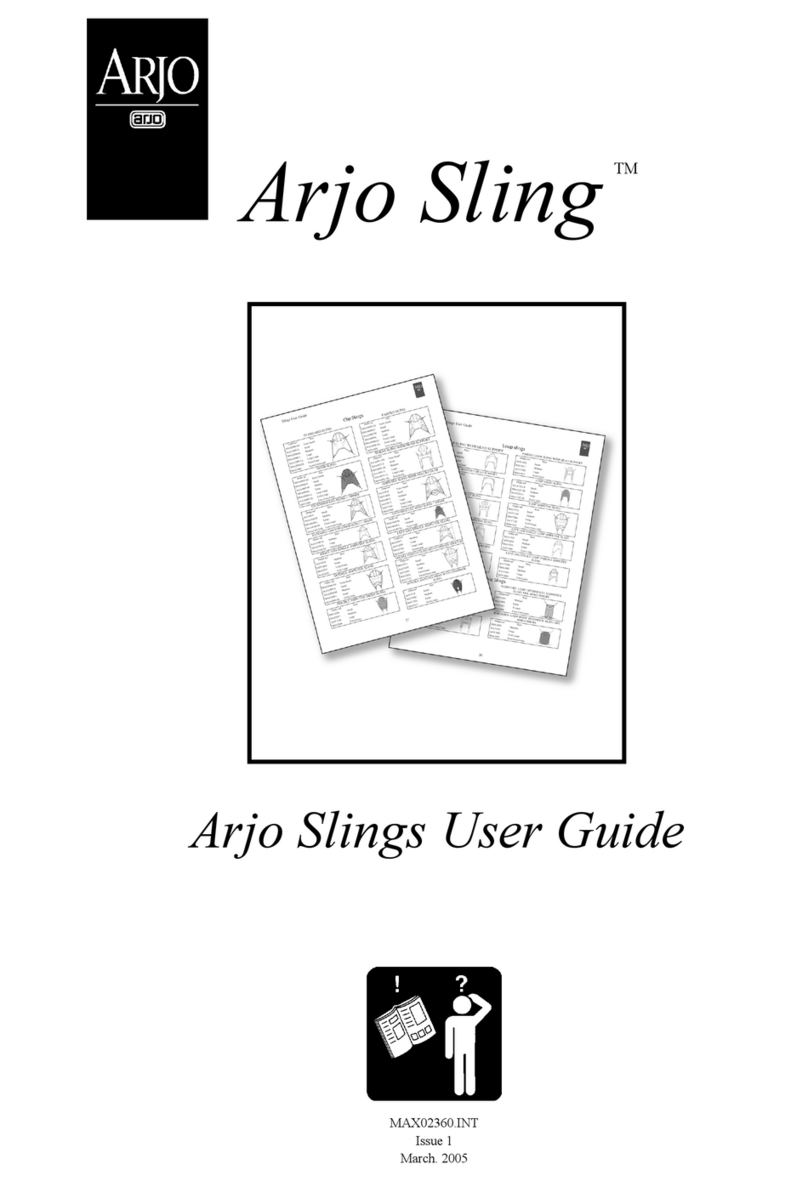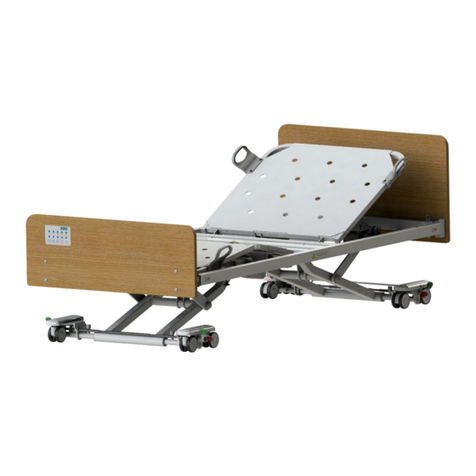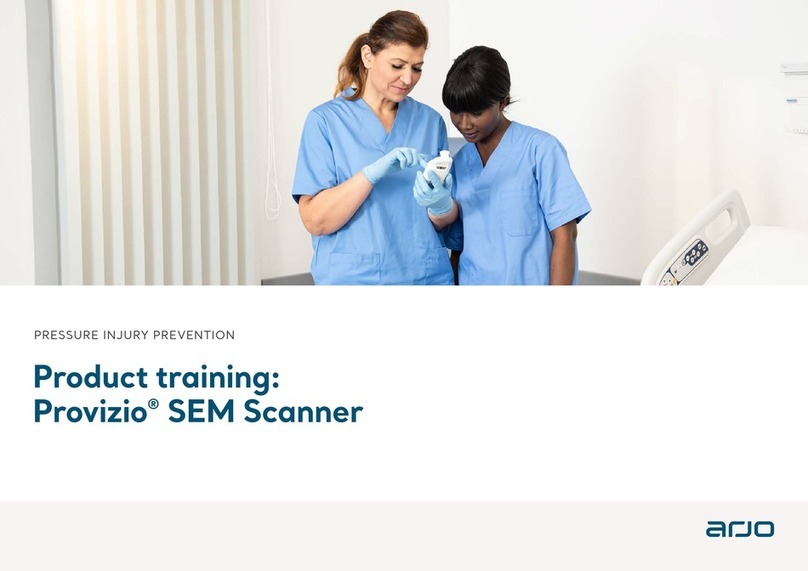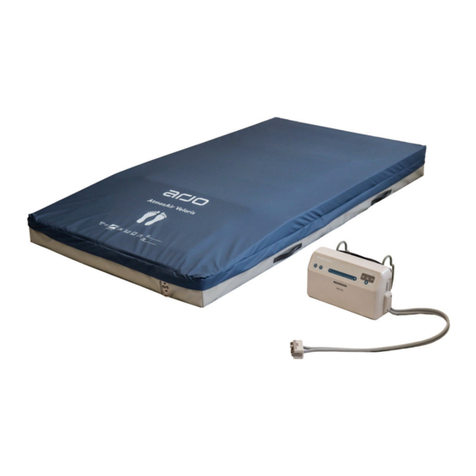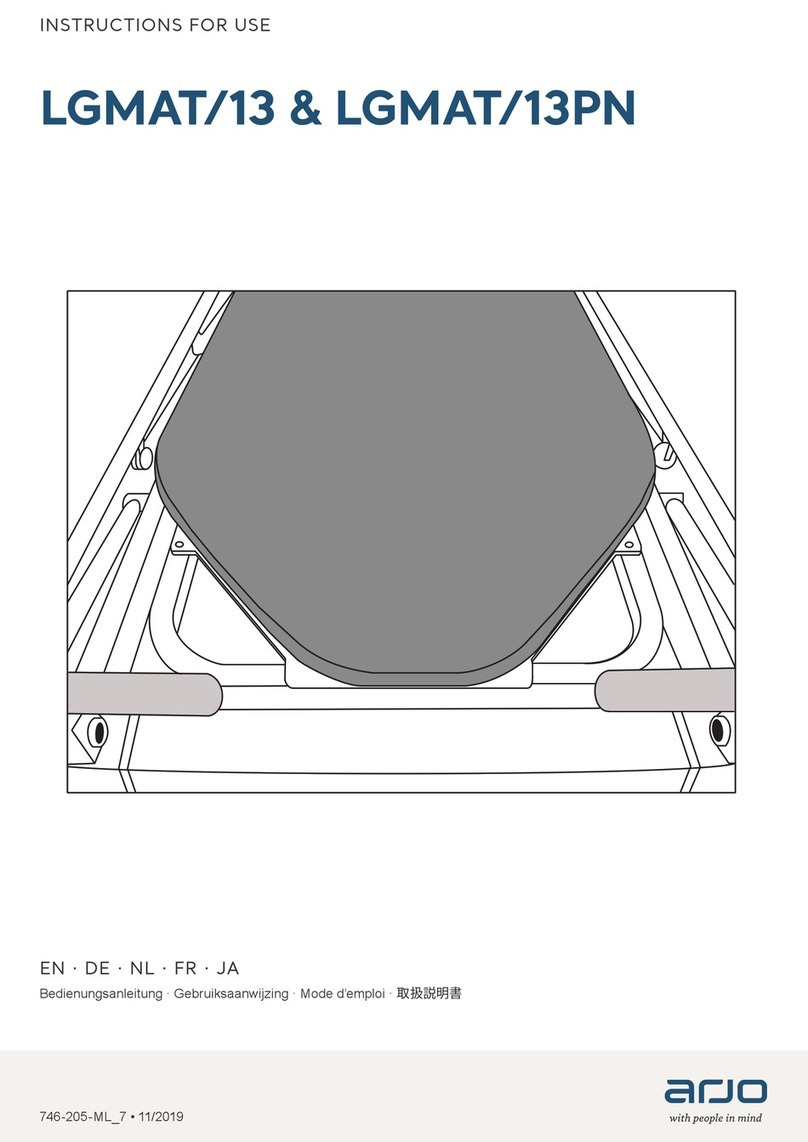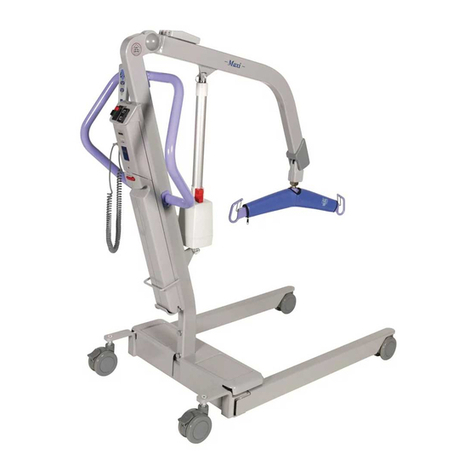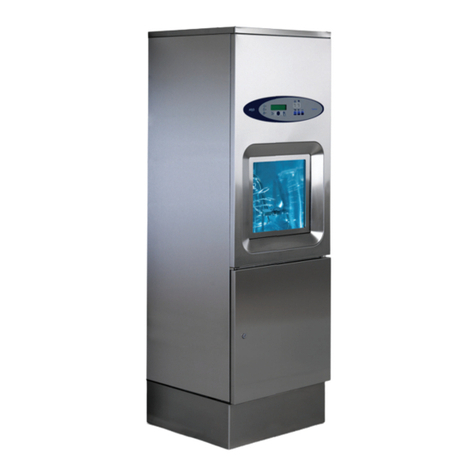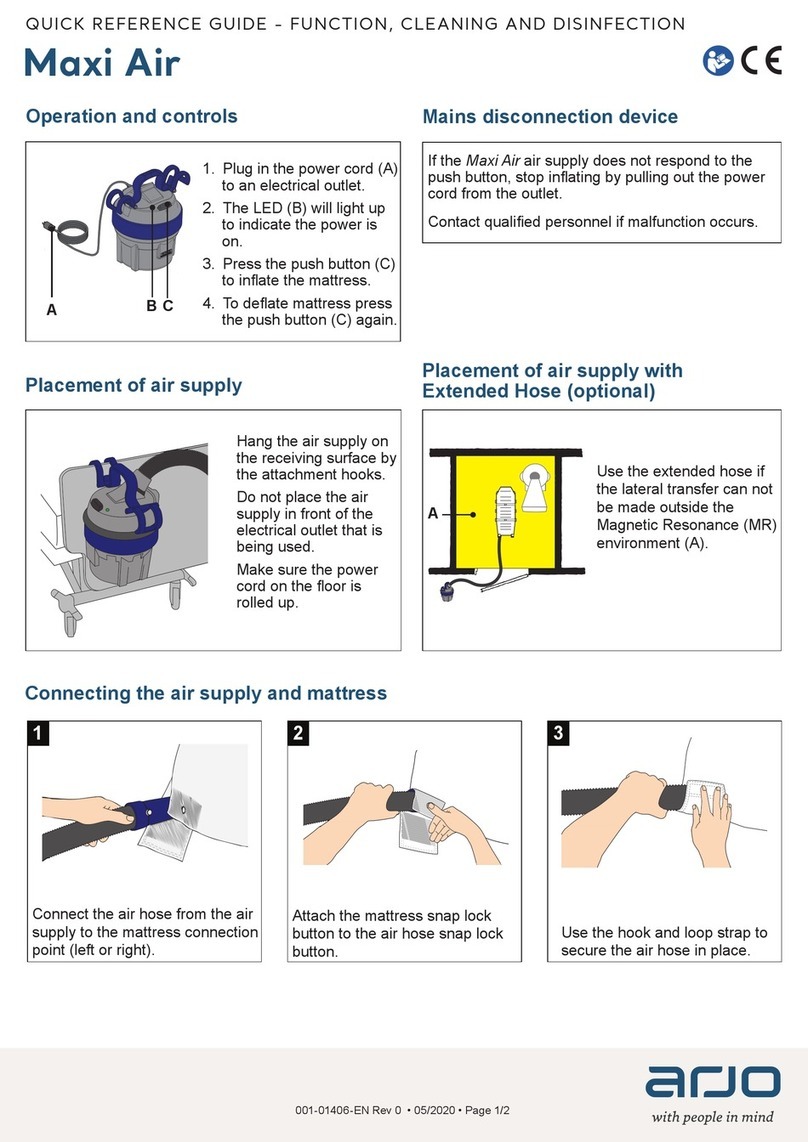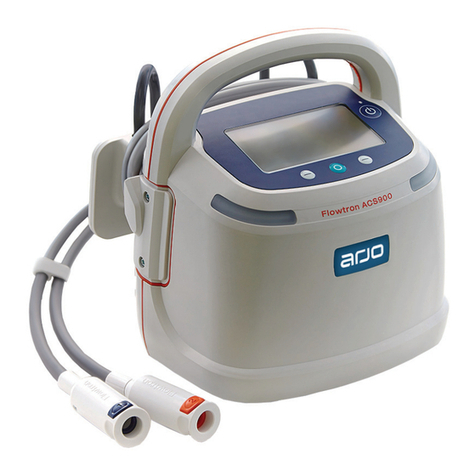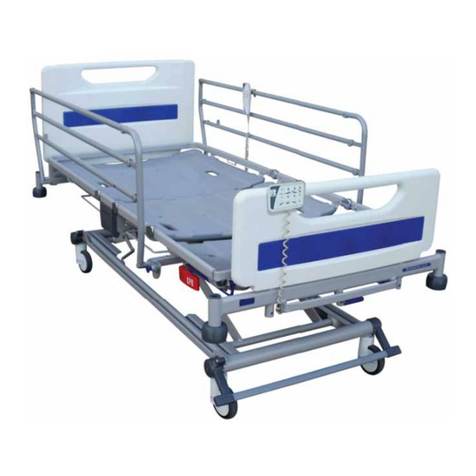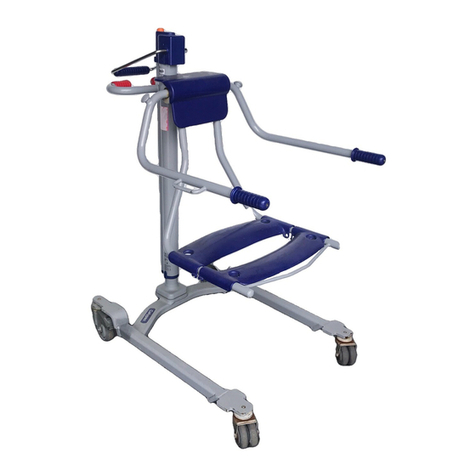5
Before using the Opera, familiarize yourself with
the various parts and controls, as illustrated in Fig.
1 and other illustrations. Then please read this
entire manual thoroughly before using the Opera.
The information in the manual is crucial to the
proper operation and maintenance of the
equipment, and will help protect your product and
ensure that the equipment performs to your
satisfaction. Some of the information in this
booklet is important for your safety and must be
read and understood to help prevent possible injury.
If there is anything in the manual that is confusing
or difficult to understand, please call ARJO (the
telephone number appears on the last page of this
manual).
Symbols used adjacent to the text in these
instructions:
This product has been designed and manufactured
to provide you with trouble free use. However, this
product does contain components that, with regular
use, are subject to wear.
Also, see the section titled “Care of the Opera”. This product is intended to be operated entirely by
an attendant. No functions regarding the control of
this product should be performed by the patient. A
second attendant may be required with certain
patients.
Danger: Electrical hazard warning.
Failure to understand and obey this
warning may result in electrical shock.
Warning: Failure to understand and
obey this warning may result in injury to
you or to others.
Caution: Failure to follow these
instructions may cause damage to one or
all parts of the system or equipment.
•Note: This information is important for
the correct use of this system or
equipment.
Warning: SOME OF THESE PARTS
ARE CRITICAL TO ENSURE THE
SAFETY IN OPERATING THE OPERA
AND MUST BE EXAMINED AND
SERVICED ON A REGULAR BASIS
AND REPLACED AS NEEDED.
Warning : Use only ARJO slings and
stretchers that have been specifically
designed for the Opera.
Warning : Do not load theOpera beyond
the approved lifting capacity of the lowest
rated attachment/accessory.
The Opera may be used on gentle slopes
with caution.
Care should be taken when manually
lifting alternative/optional components,
i.e. stretcher frames, spreader bars etc., to
avoid injury.
Do not attempt to manually lift the
complete lift.
Caution: Although manufactured to a
high standard the Opera and accessories
should not be left for extended periods in
humid or wet areas.
Do not, under any circumstances, spray
the Opera or accessories with water, i.e.
under the shower (this excludes slings or
ARJO approved wet environment
equipment).
Warning: It is advisable to familiarize
yourself with and understand the
operation of the various controls and
features of the Opera and ensure that any
action or check specified is carried out
before lifting a patient.
Warning: The Opera has been designed
as a mobile lift for raising and
transporting patients in hospitals and care
facility environments, and should only be
used for this purpose.
The Opera can be supplied with a variety
of optional attachments, which may not be
described in these instructions. If the
Opera has been fitted with an alternative/
optional sub-assembly, i.e. a stretcher,
etc., always refer to the separate relevant
operating instructions supplement, as well
as these instructions, before operating the
lift.
Safety Instructions
